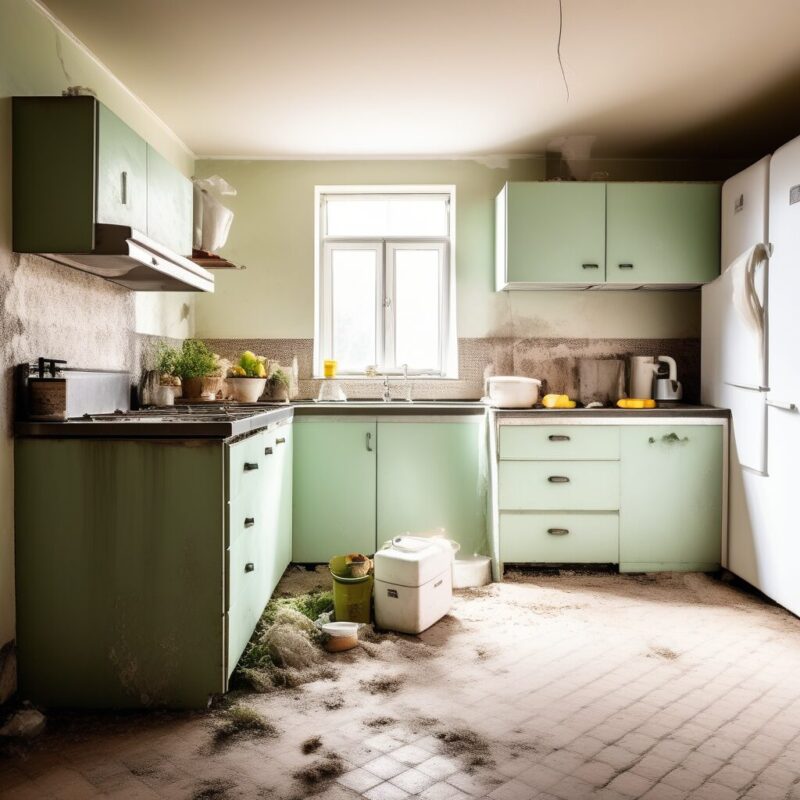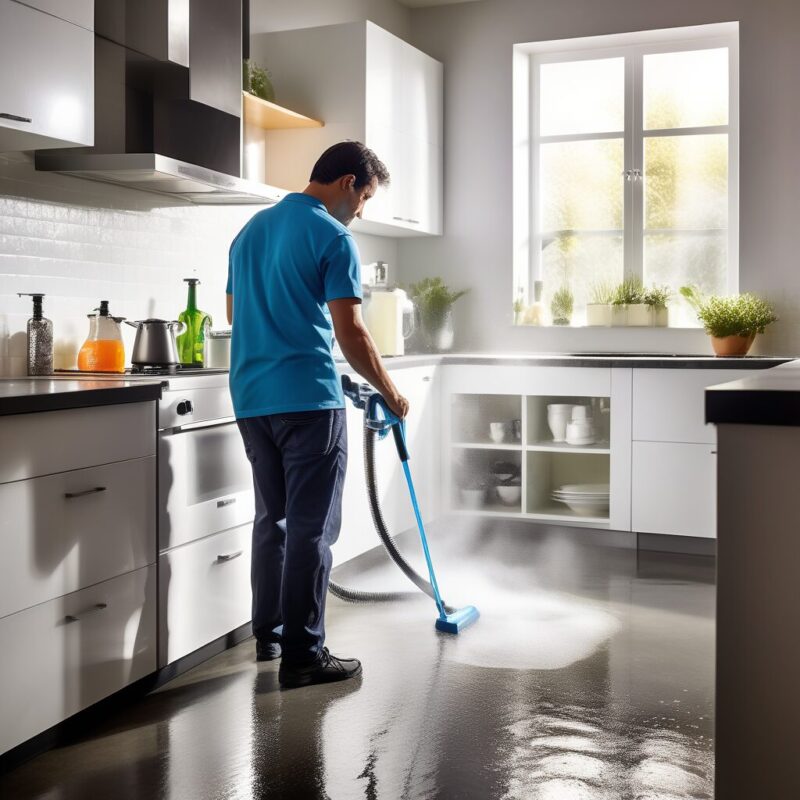
Unwanted guests like mould can find their way into our homes, especially in places where moisture and darkness meet. Although the kitchen is frequently the centre of culinary innovation and nourishment, it is not impervious to this frequent intruder. Identifying the presence of mould in your kitchen is the first step towards solving the problem. We’ll go over what mould typically looks like in kitchens and why it’s so important to find it and treat it right away.
1. Difference in Colour
Mould can appear in a variety of colours; it is not limited to just one. The most prevalent colours you could find in your kitchen are grey, brown, black, and green. These colours can frequently be seen as streaks or speckles on walls, ceilings, or even food items rather than as solid patches. The important thing to remember is that it can appear in a variety of hues and patterns, so it’s best to keep a look out in damp, dark places.
2. The appearance
Usually, it has a unique texture. It can feel anything from powdery to slimy to velvety or fuzzy. Depending on the kind of mould and the surface it’s growing on, the texture may change. Mould is frequently found in kitchens on surfaces like walls, tiles, and even spoiled food. If treatment is not received, these typically manifest as green or black spots and speckles that quickly become hazier and more numerous.
3. Musty Odour Due to Mould
Odour The musty, disagreeable smell of mould in the kitchen is one of the easiest ways to spot it. There may be mould present in your kitchen if you notice a persistent, strong, earthy smell. In humid environments or with inadequate ventilation, the odour frequently intensifies. We would advise contacting a professional to determine the best course of action in case of a leak or moisture source when the smell is this strong.
4. Place
Because it enjoys moisture, mould is likely to grow in damp areas of your kitchen. Look under the sink, around dripping pipes, in the refrigerator’s corners, and even in the pantry for any food that may have been forgotten. It is important to regularly inspect hidden spaces because it can grow there as well. Foods that quickly expire should always be removed and disposed of, and it’s best to maintain a regular schedule for sweeping, cleaning, and food inspection.

5. Pollution of Food Due to Mould
You should be concerned about mould growth on more than just the walls and surfaces in your kitchen. Food items can become contaminated by mould quickly spreading throughout them. Keep an eye out for discoloured areas, fuzzy growth, or an unpleasant odour on your food. When in doubt, it’s advisable to get rid of impacted items to prevent unintended reactions and possible health consequences.
6. Hypersensitivity Reactions
It has been noted that mould in the kitchen can occasionally cause allergic reactions in people. Sneezing, coughing, rashes on the skin, or even breathing problems are possible symptoms. However, since we are unable to establish definite relationships between mould and health, you should always consult a medical professional if you experience any health problems that you believe could be related to environmental factors.
7. Expert Evaluation
It is advisable to have a professional inspection done if you think your kitchen may have it but are unsure of its presence or extent. Experts in mould identification and remediation can perform comprehensive assessments, determine the type of mould, and suggest efficient measures to keep your kitchen a safe and healthy environment. Recognising the presence of it in your kitchen is crucial to keeping your home hygienic and safe. Whether it’s through peculiar textures, colours, smells, or food contamination, being watchful can help you identify it early and take the necessary corrections. Recall that in order to stop it from growing back, it must be removed carefully and completely. To protect your house and well-being, don’t hesitate to get in touch with a professional mould remediation service if you suspect a mould problem in your kitchen.